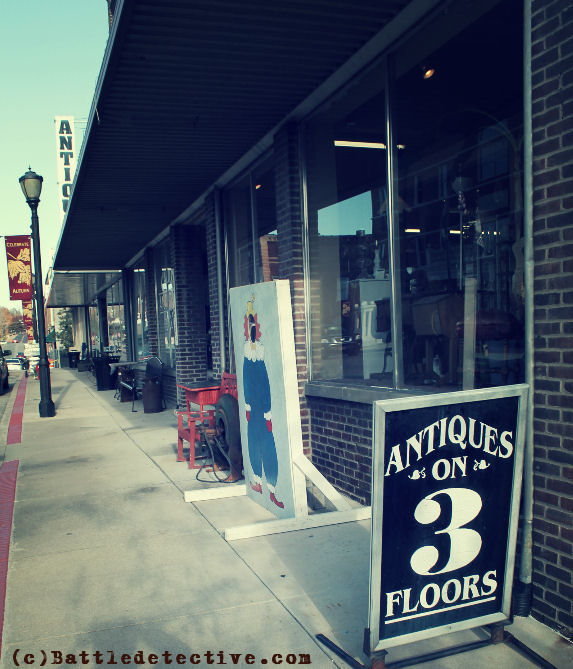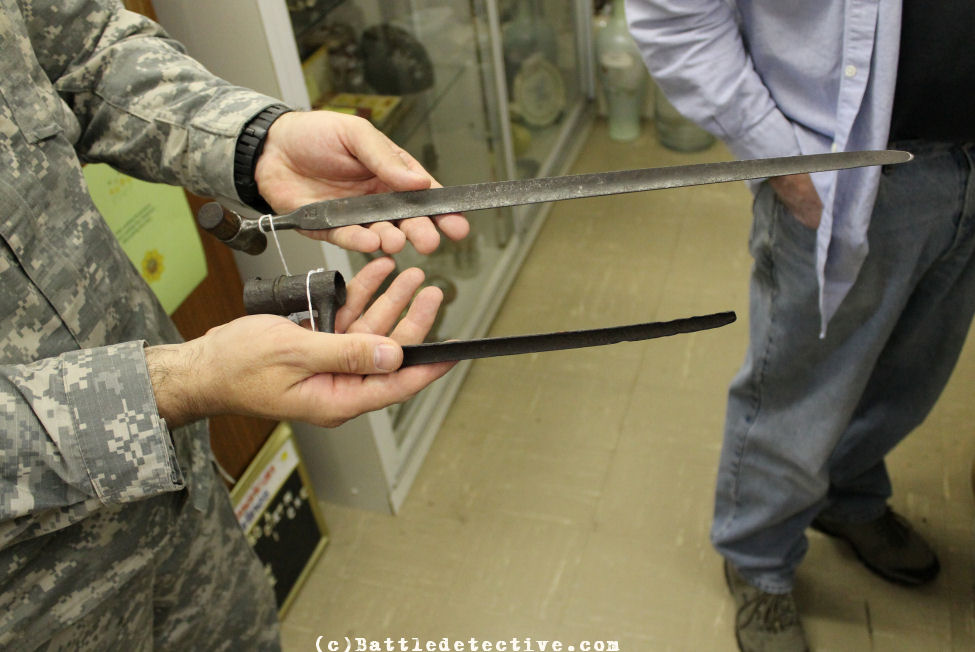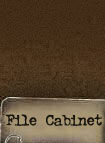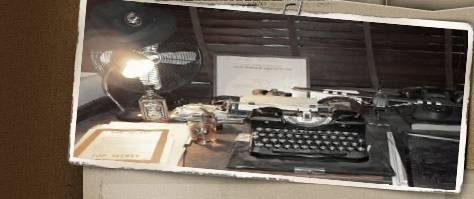| |
|

Battle Relic: Model 1842 socket
bayonet for the U.S. Model 1842 .69
calibre Musket
Introduction: On November 1,
2012 we bought this American Civil
War battle relic from David Sutton
of Cherokee Antiques in Cadiz,
Kentucky.
The bayonet misses about 50% of the
(business end of his) blade and had
clearly spent a fair amount of time
exposed to the elements.
According to David Sutton it was
found in the ground in Huntingdon,
Tennessee several years ago.
|
(click for
enlargement)
 |
|
(click for enlargement)
 |
Expertise
We were in Sutton’s shop in the
company of the Division Historian of
the 101st Airborne Division (Air
Assault) Captain James Page.
Captain Page is not only an expert
when it comes to the 101st Airborne
in World War Two (and to whom
identifying fake
Normandy crickets and
506th helmet stencils is a sure
bet) but knows his Civil War details
as well.
On display –and for sale- were two
bayonets for the Model 1842
Springfield Musket. |
This type of rifle was developed two
decades before the start of the
Civil War and saw action with both
Confederate and Union troops.
It is therefore a symbol for the war
between North and South; the Blue
and the Grey.
|
|
(click for
enlargement)
 |
|
Mass grave locator
One Model 1842 Bayonet had been
modified to be used as a prod, by
bending the bayonet’s curved shank
straight and inserting a wooden
handle in the bayonet’s socket so it
can be pushed forward.
Mr. Sutton explained to us that
after countless battles of the Civil
War, there had been so many soldiers
killed in action and strewn across
the terrain that they were often
buried in mass graves temporarily.
Sometimes abandoned trenches were
used for this; a common practice in
Word War One in Europe as can be
read in our
Case File # 17.
When the time came to disinter,
identify and rebury the dead, these
mass graves had to be recovered
again, which in some cases became a
difficulty due do overgrowing
vegetation.
That was when these prods or pokers
were used. |
Model 1842 Socket Bayonet and
Model 1842 Musket
The item which we eventually bought
was not altered for use other than a
weapon, although it misses its point
and a large portion of the blade.
An intact bayonet of this type was
20 1/2 inches long, with a 2 7/8
inch socket and an 18 inch
triangular blade.
The U.S. Model 1842 Musket was the
first arm to be produced at both the
Harpers Ferry and Springfield
Armories on a completely
interchangeable basis.
This meant that from now on all guns
parts of this model could be
replaced without modification.
The Model 1842 was the first
regulation percussion arm produced
in the national armories, and at the
same time, the last of the .69
caliber smoothbores.
Rifling of musket bores (the process
of making helical grooves in a
firearm’s barrel) became the
standard by the time the Model 1842
came into mass production and the
last batches came with thicker steel
barrels.
This made these muskets suitable for
subsequent rifling.
|
|
Conclusion
Without Captain Page’s knowledge of
American Civil War weaponry at hand
in Mr. Sutton’s business, we would
not have identified this Battle
Relic. It is now an important asset
in this agency’s collection. |
|
EXHIBITIONS |
|
(click for
enlargements)




 |
|
Back to Battlerelics
 |
|
|













